Old Bering Sea Prehistoric Eskimo Okvik Carved Walrus Ivory Female Figure of Abstract Form
An Old Bering Sea Prehistoric Eskimo Okvik Carved Walrus Ivory Female Figure of Abstract Form
The head has been deliberately detached and later re-attached when found
Old worn smooth silky dark brown to creamy patina
Said to be from St Lawrence Island
200 BC - 100 AD
Size: 17.5cm high, 4.5cm wide, 2.5 ins deep - 7 ins high, 1¾ ins wide, 1 ins deep
The head has been deliberately detached and later re-attached when found
Old worn smooth silky dark brown to creamy patina
Said to be from St Lawrence Island
200 BC - 100 AD
Size: 17.5cm high, 4.5cm wide, 2.5 ins deep - 7 ins high, 1¾ ins wide, 1 ins deep
The Alaskan cultures centred on St Lawrence Island and along the adjacent coasts surrounding the Bering Strait, are known as Old Bering Sea. The ‘Okvik Old Bering Sea I’ is the earliest known period dating to approximately 200 BC to 100 AD. The Prehistoric Eskimos, like those of the later periods, were seasonal hunters. They spent the summer in skin tents pursuing the caribou on land and the fish in the rivers, and in Winter returned to the coast to hunt on the ice for walrus, seal, narwhal and sometimes polar bears.
Of all the animals which existed in the Arctic, both in prehistoric and modern times, none has been more important to human survival than the walrus. It provided essential food, its blubber was rendered into oil for heating and light and for cooking. Its skin was used for clothing and for constructing boats. Its intestines and sinews were worked into cords and lines, and its ivory tusks and bones were used for the manufacture of a wide variety of tools, and importantly for the making of objects of art such as this.
During excavations on St Lawrence Island the torsos of these human figures, both male and female, have been found in separate locations from the matching heads. It has therefore been suggested that the breaking off of the head from many of the figurines that have been found was a deliberate ritual, and ceremonial act.
Of all the animals which existed in the Arctic, both in prehistoric and modern times, none has been more important to human survival than the walrus. It provided essential food, its blubber was rendered into oil for heating and light and for cooking. Its skin was used for clothing and for constructing boats. Its intestines and sinews were worked into cords and lines, and its ivory tusks and bones were used for the manufacture of a wide variety of tools, and importantly for the making of objects of art such as this.
During excavations on St Lawrence Island the torsos of these human figures, both male and female, have been found in separate locations from the matching heads. It has therefore been suggested that the breaking off of the head from many of the figurines that have been found was a deliberate ritual, and ceremonial act.
Old Bering Sea Prehistoric Eskimo Okvik Carved Walrus Ivory Female Figure of Abstract Form
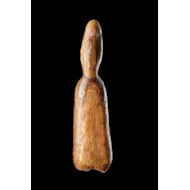
SOLD
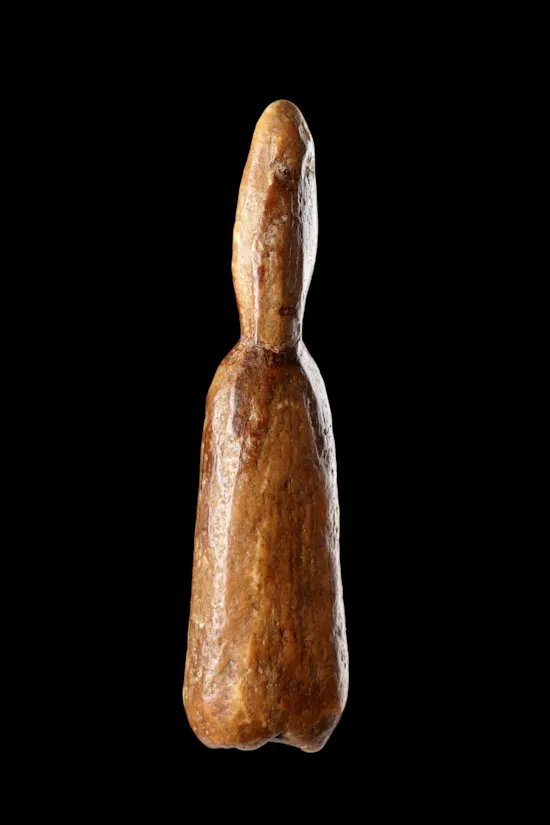

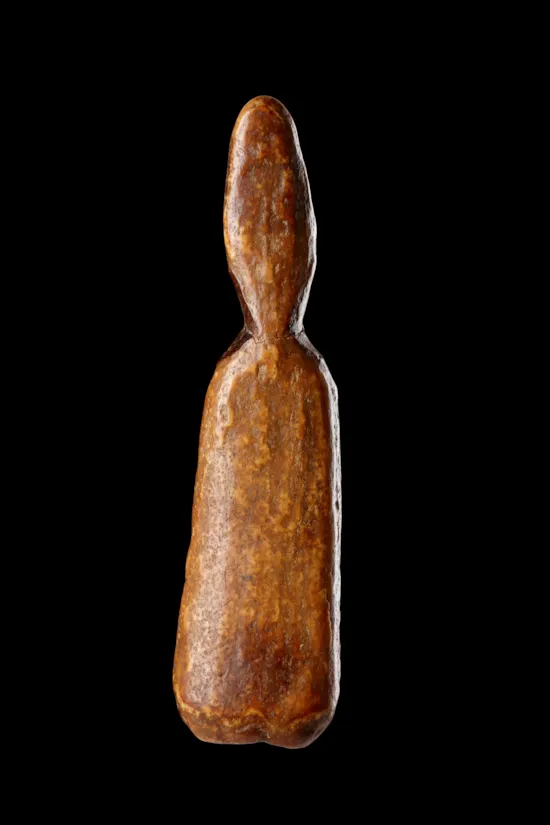
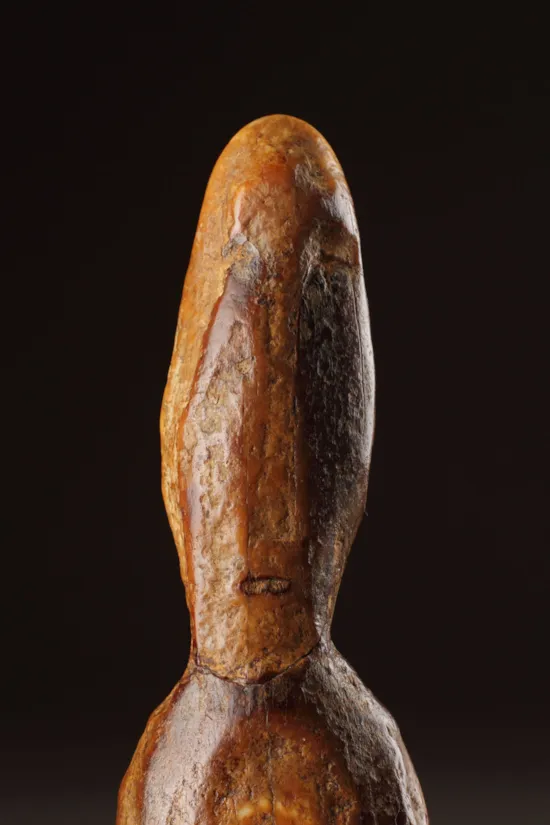
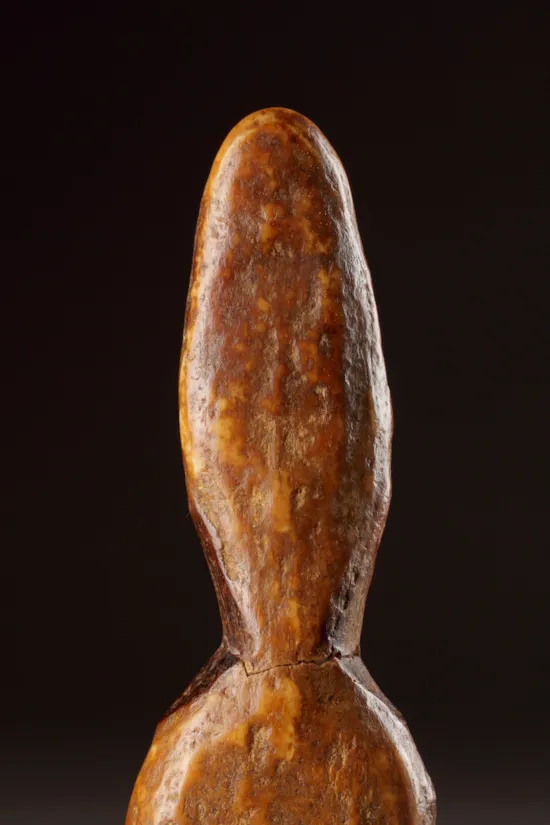





YOU MAY ALSO LIKE

